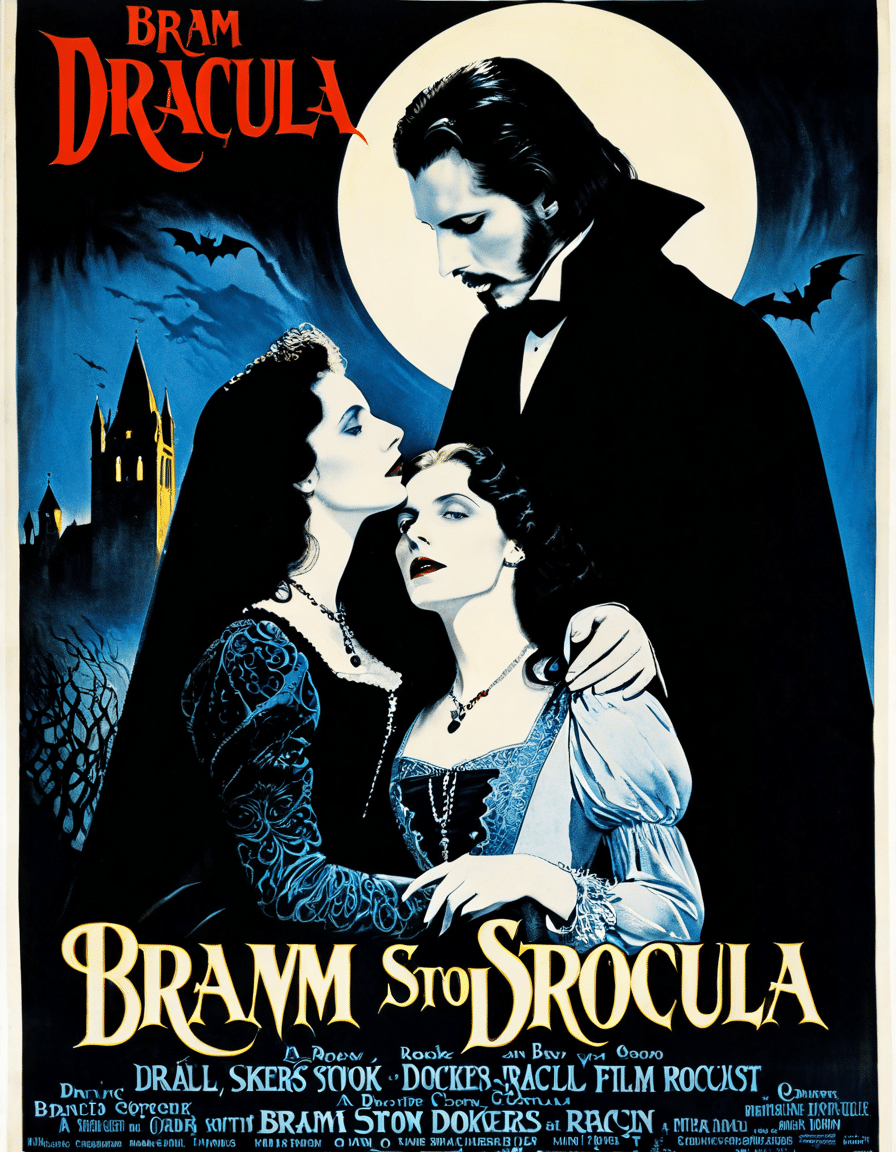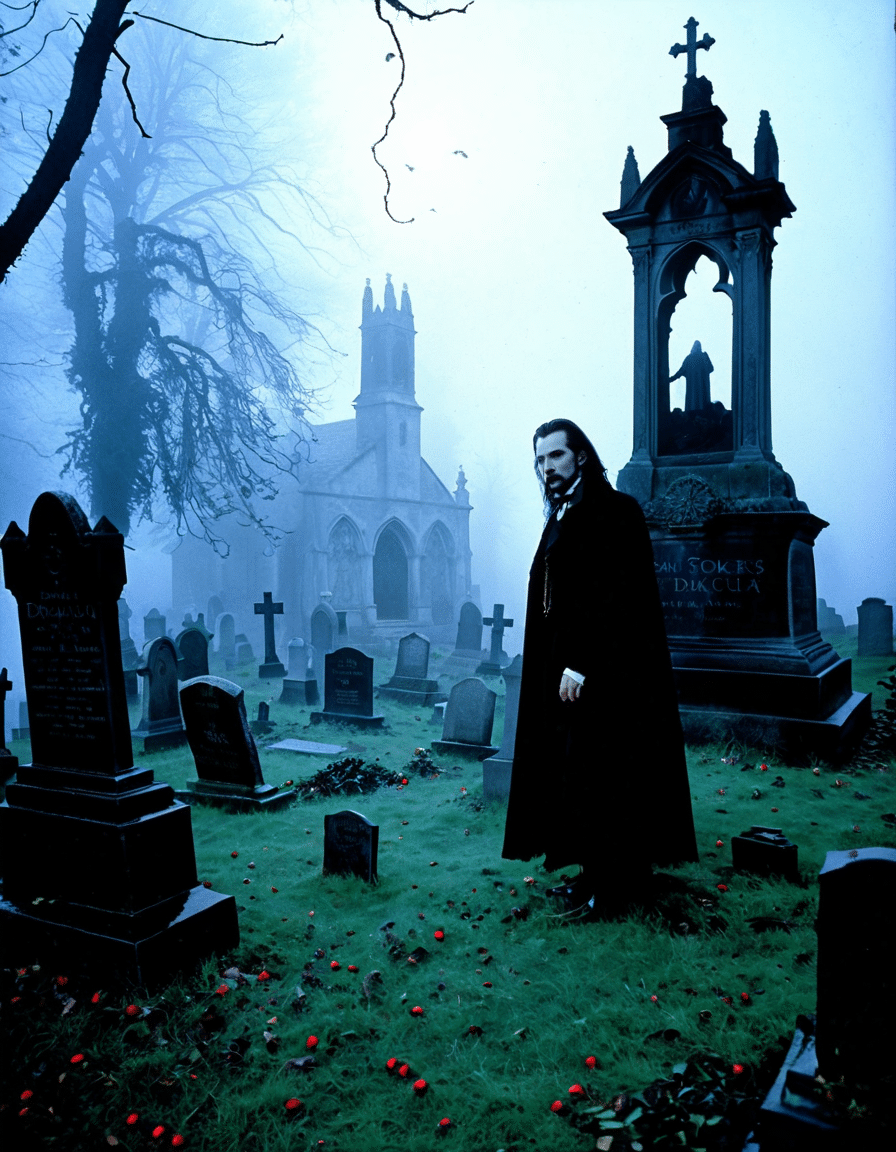Bram Stoker’s “Dracula,” first published in 1897, remains one of the cornerstones of gothic literature, weaving together intricate themes of horror, love, and the eerie dance between darkness and light. This classic tale has seeped into our cultural consciousness, influencing not just horror enthusiasts but also those seeking tales of romance. Think of it as the original vampire saga that paved the way for countless adaptations and reboots. From cult classics to blockbuster hits, let’s delve deeper into the lasting impact of “Dracula” on modern media, including its fascinating ties to narratives like Alice in Wonderland and its profound exploration of love entwined with fear.

Exploring the Cultural Impact: Top 5 Ways Bram Stoker’s Dracula Influences Modern Media
It’s hard to imagine vampires today without thinking of Count Dracula. Stoker’s depiction of the charming yet terrifying Count crafted the template for modern vampire stories. Want proof? Take a look at Anne Rice’s “The Vampire Chronicles” or HBO’s “True Blood”—they both borrow from Stoker’s blend of seduction and danger. Charisma paired with a predatory nature makes these stories irresistibly engaging.
At its core, the relationship between Mina Harker and Dracula is a love story drenched in duality. This theme raises pivotal questions about forbidden love, obsession, and the boundaries people are willing to cross for love. Stephenie Meyer’s “Twilight” echoes this sentiment, showcasing how love extends beyond mortality while also stirring ethical dilemmas. This dance of love and horror resonates strongly, reminding viewers of classics like “Pride and Prejudice,” where deep emotions shape destinies.
Stoker’s depiction of women presents a thought-provoking discourse on female agency and vulnerability. Characters like Mina and Lucy navigate a world rife with male dominance while grappling with desires and fears. Modern narratives in series like “Penny Dreadful” and films like “The Love Witch” echo this struggle, cementing Stoker’s influence on contemporary feminist discussions. The dance between empowerment and submission that Stoker introduces continues to find relevance today.
With over 200 adaptations of Stoker’s “Dracula” in film, it’s clear that his story has permeated pop culture. From the spine-chilling visuals of Francis Ford Coppola’s 1992 rendition to the hilarious antics in “What We Do in the Shadows,” these adaptations highlight the versatility of Dracula’s tale. Each interpretation finds a unique angle, attracting diverse audiences while keeping Stoker’s original spirit alive.
At first glance, “Alice in Wonderland” might seem like a different world from “Dracula,” but both stories delve into transformation and explore the subconscious. The merging of gothic horror with whimsical elements highlights a bridge between these narratives. Think of Tim Burton’s film adaptations, where the macabre meets the fantastical, making room for interpretations that challenge reality and invite fresh perspectives. This blend showcases how timeless tales evolve yet stay deeply relevant.

The Intersections of Horror, Love, and Identity in Bram Stoker’s Dracula
“Dracula” digs deeper than sheer terror; it forces us to confront issues of identity and attraction. Count Dracula symbolizes the enchanting yet unnerving idea of the foreign ‘Other.’ This paradox draws in audiences, making us examine contemporary worries about globalization and the fear of what lies beyond. The novel’s exploration of love and horror compels characters (and readers) to face their vulnerabilities head-on, enriching the tale’s allure.
Recent adaptations, like the one available on Netflix, further illustrate this evolving take on Dracula. Such portrayals have grown to include vulnerable traits, seeking empathy instead of sheer horror. This mirrors our current societal shift towards mental health awareness and the exploration of what emotional struggles truly mean.
By juxtaposing horror with romance, “Dracula” becomes more than a mere ghost story; it transforms into a investigations into our desires and fears. In doing so, it invites deeper reflections and resonates with modern audiences grappling with issues of love, identity, and emotional complexity.
Exploring the Artistic Legacy: Bram Stoker’s Dracula and the Visual Arts
Stoker’s “Dracula” has inspired more than just literature and film; it has also seeped into the visual arts. Artists like Edward Gorey breathed new life into Stoker’s narrative through their iconic illustrations, while contemporary galleries showcase gothic-inspired installations that continue to fascinate. The visceral responses elicited by these art forms draw audiences into a world that balances beauty and horror.
Artistic exhibitions inspired by “Dracula” often challenge viewers to confront the intertwining of fear and beauty. These displays encourage an introspective journey, forcing us to consider love and loss through a different lens. As we continue to explore art, Stoker’s story evolves, leading to a rich dialogue on the nature of horror steeped in romance.
Reimagining Timeless Tales for Future Generations
Ultimately, Bram Stoker’s “Dracula” is a multifaceted narrative that speaks to the eternal themes of love and identity. It invites reinterpretation, ensuring that future generations can unpack the layers intertwined within its pages. As society changes, the narrative continues to resonate, urging us to delve into areas where love brushes up against terror.
In the unpredictable landscape of art, literature, and culture, “Dracula” remains an essential tale. Its invitations to explore the intricacies of love and fear allow for profound examinations—results to which we can all relate. As we look forward, these explorations bring forth not just tales of horror but also the indomitable human emotion of love, making the Dracula legacy not just a scary story, but one that’s forever relevant and deeply fascinating.
Whether you’re watching the latest vampire drama on Where To watch From TV series or diving into graphic interpretations, the heritage of Bram Stoker’s Dracula continues to cast its long shadow over all forms of storytelling.
Bram Stoker’s Dracula: Fun Trivia and Interesting Facts
Hidden Historical Gems
Did you know that Bram Stoker’s inspiration for Dracula came from a blend of folklore and historical figures? One of the most notable influences was Vlad the Impaler, a 15th-century ruler known for his brutal tactics. Stoker painstakingly wove this historical essence into a narrative that became the gold standard for vampire literature. Interestingly, while Stoker created a character feared and admired alike, modern adaptations have often softened this portrayal. For those who revel in unusual takes on classic storytelling, exploring adaptations like this from The eminence in shadow offers a fresh perspective. Each new interpretation holds mirrors to past fears while carving out their unique narrative path.
Pop Culture Impact
The impact of Bram Stoker’s Dracula on pop culture is palpable and far-reaching. From films to meme culture, its themes of desire and horror resonate through time. For instance, the infamous dance meme genre brings unexpected humor to serious themes, reflecting the way modern audiences engage with traditional tales. One can even consider how remakes, like those featuring actors like Will Kemp, bring a fresh flair while honoring the source material. Each new cast member or interpretation spins a different angle on the vampire’s allure, making the concepts behind Bram Stoker’s Dracula exceptionally enduring.
The Vampire Evolution
As vampire lore evolves, so do the interpretations of Bram Stoker’s Dracula. The film adaptations vary greatly—the surreal horror of the 1992 version, for instance, showcases lavish set designs, while others take a more minimalist route. The character of Dracula himself has been played by countless actors, each capturing different nuances of this complex figure. Reflecting on this, one might link it to the idea of Dinamitas, which captures explosive energy, just like these various portrayals do for horror fans. It’s fascinating to see how such a rich story can be retold in ways from Temixco to the corners of casual conversation at the cast Of Beverly hills cop reunions. Each iteration is a testament to the lasting impact of Stoker’s original narrative, reminding us that the hunt for understanding our deepest fears and desires never truly ends.
In the end, Bram Stoker’s Dracula prevails, not just as a tale of horror but also as a love story that transcends time, resonating deeply with audiences seeking more than just simple scare tactics.





